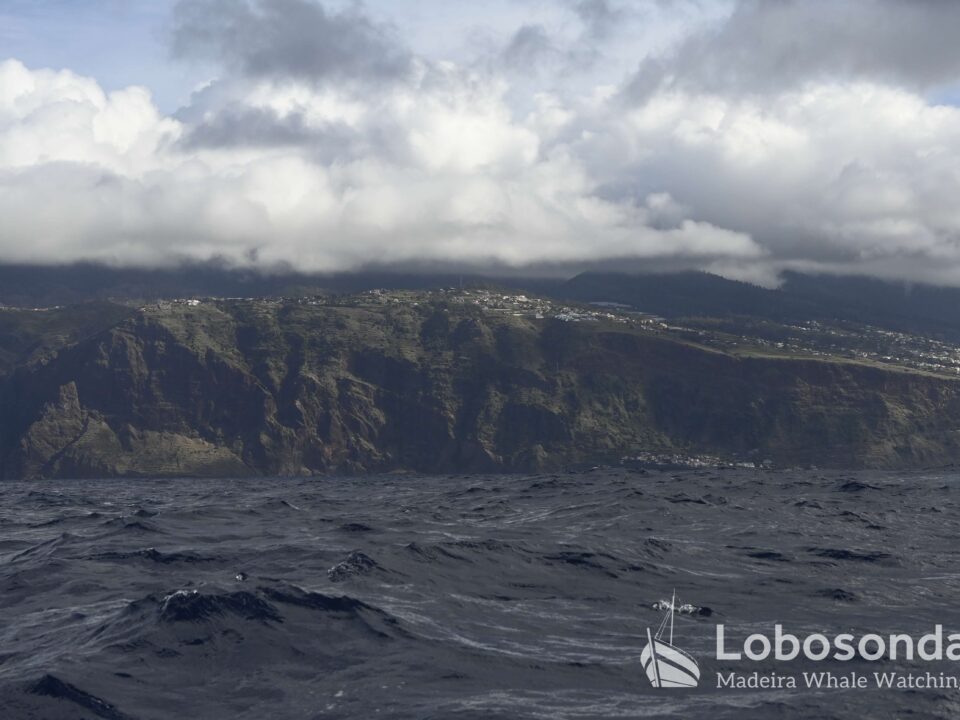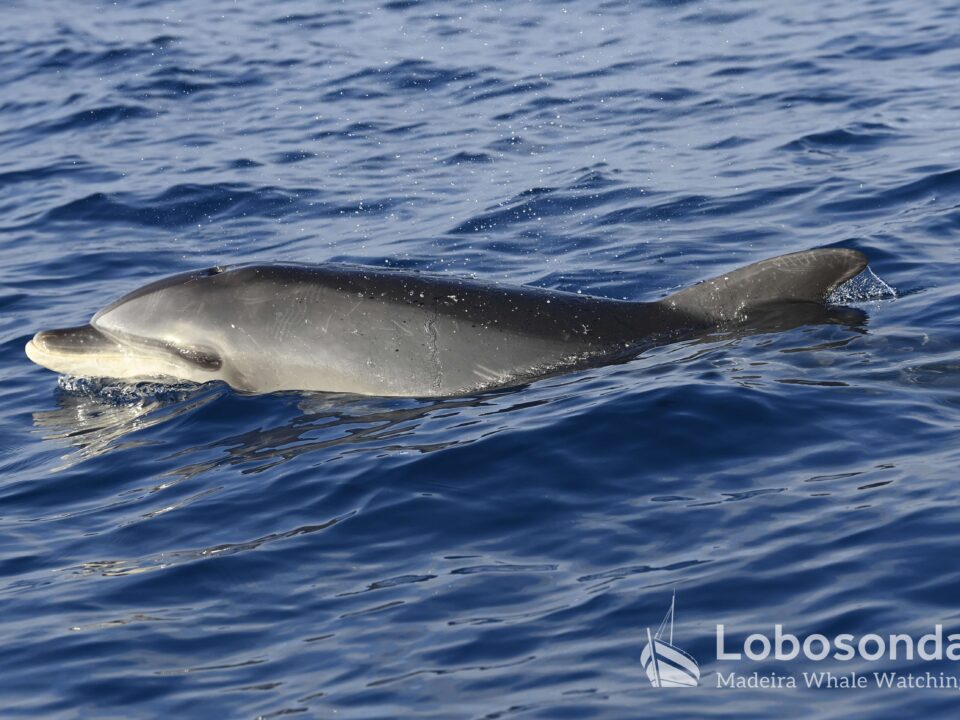
26.11.2022 – Amazing show
December 3, 2022
29.11.2022 – Wintery sea
December 7, 2022Wow, what a fantastic trip! As we went out looking for bottlenose dolphins, there was suddenly a high-pitched spout. It took a while before we were sure which baleen whale it was. The surprise was big! A Humpback whale (Megaptera novaeangliae) in our waters! That happens more than rarely. But of course it’s very whalecome 😉
The sea was calm, and we were able to follow the animal swimming under the water surface. Its long pectoral fins shone bright white in the blue sea. These pectoral fins are the longest extremities in the animal kingdom. They grow 4-5 m long. While Pacific humpback whales have black pectoral fins, North Atlantic humpback whales have white.
It was a yearling who showed us his repertoire of activities. A few times he turned his entire body up out of the water. He breached a few times. What a majestic sight. He was approaching the Ribeira Brava, and we also had an excellent view of this juvenile on the Stenella.
Since three boats wanted to observe this rare visitor, we went to the four Bottlenose dolphins (Tursiops truncatus) that were swimming quite close to the coast towards Funchal. One animal hit the sea surface several times with its tail fin. Tail slaps are a sign of displeasure. This can be an argument in the group, but it can also be an indication that we are becoming a disruptive factor. So we let the four dolphins swim their own way.
However, we had the pleasure of meeting the humpback whale a second time. From afar, we saw him being very active. He threw up the entire back part of his body high up into the air and let himself fall into the water with a great deal of noise. He repeated this behavior many, many times. As you can see from the photos, the animal has an almost white tail. This black and white pattern on the underside of the tail is used to identify humpback whales. No two humpback whales have the same markings. The tail pattern is divided into five categories. Our whale definitely belongs in category 2 (category 5 is completely black). Humpback whales are the acrobats in marine magic world. Their activities can be used for communication and as an expression of emotional states. Breaching are used to express joie de vivre or dominance. Whales breach to get rid of parasites, which can be up to one ton of weight. Humpback whales breach to announce that they have arrived at an area or to announce that they are withdrawing from a reproductive active group where males are competing for the favor of a female. Female humpback whales draw attention by breaching, flipping, and tail breaching. This may attract the Jack of Hearts that will conceive her. However, only after an extensive check of the partner, he might be the lucky one and only. Of course, this must be well checked, because the whale lady only mates with one male.
This yearling is on his first solo trip. He is a wanderer of the seas. After a summer in the north, where its feeding grounds are, he is now making its way to its mating grounds in warmer climes. One can assume that he spent the summer in Iceland or Norway. Now the question is whether he prefers the Caribbean for wintering, 85% of the North Atlantic’s humpback whales meet there to mate or give birth to their calves, or whether he swims to the Cape Verde Islands (15%). However, it is clear that he will not reproduce just yet, as sexual maturity does not occur until around 5-7 years of age.
Another day when we can be thankful for the wonderful gifts of nature. Today was amazing!
By Fatima Kutzschbach
Sightings of the day
Ribeira Brava
10:00 Humpback whale, Bottlenose dolphins
Stenella
10:00 Humpback whale, Bottlenose dolphins






























